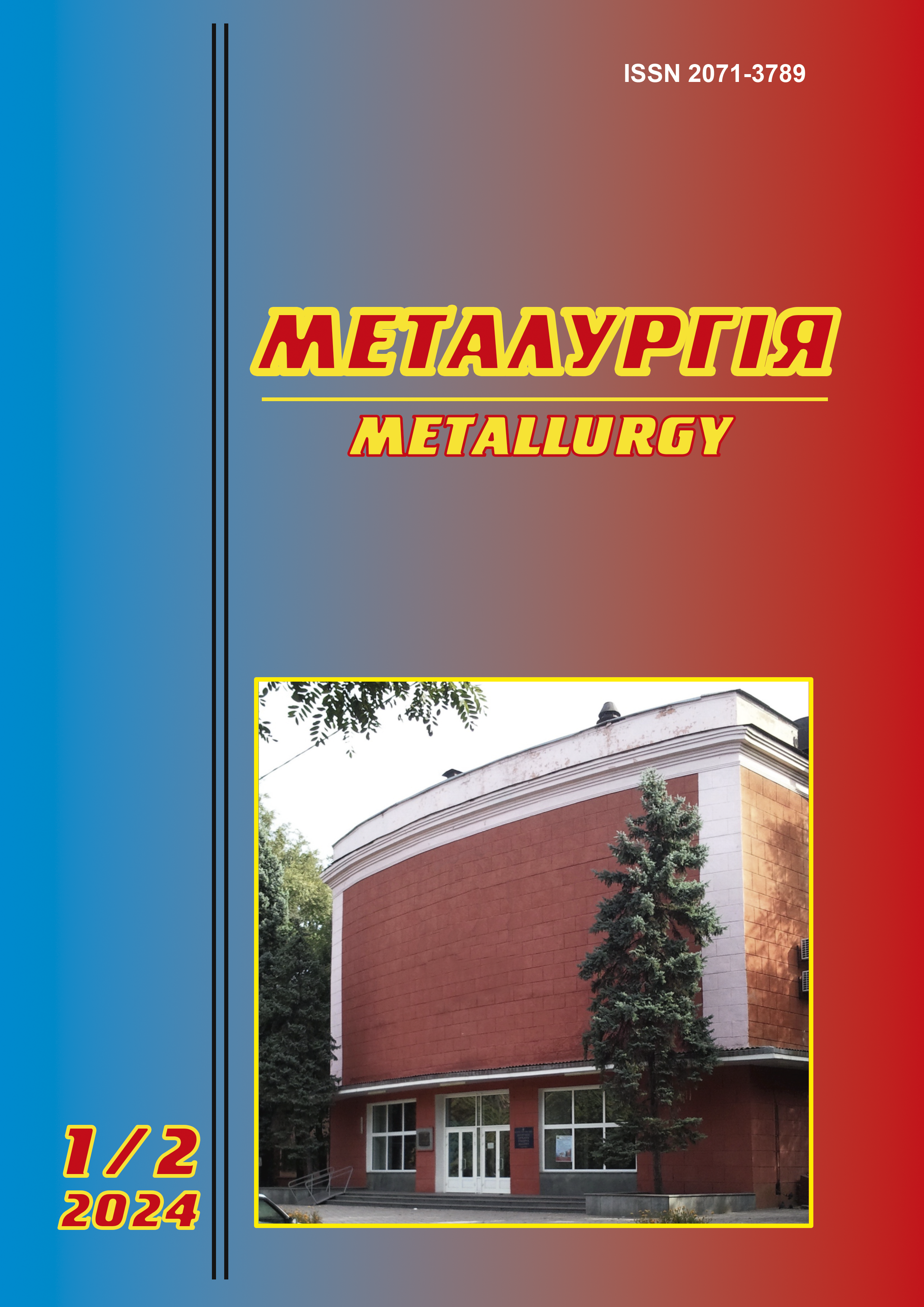PROCESSING OF HYDROCHLORIC ACID SOLUTIONS WITH THE PURPOSE OF OBTAINING A COMMODITY PRODUCT
Abstract
The study analyzes the dynamics of waste generation and management in the region from 2014 to 2021. It was determined that the majority of waste in the Zaporizhzhia region comes from the metallurgical industry. The specific features of technological processes, particularly the use of pickling solutions in steel production, result in the formation of large volumes of spent pickling solutions containing diluted hydrochloric acid and iron chlorides. The lack of effective methods for recycling these solutions leads to environmental and economic losses. The article proposes a technologically efficient method for processing spent pickling solutions using an ozonator, which ensures the oxidation of ferrous chloride (FeCl₂) to ferric chloride (FeCl₃), producing a coagulant. Experimental studies confirmed the effectiveness of ozone in reducing processing time compared to using air oxygen. It was established that with an air mixture containing ozone at a flow rate of 0.5 L/min, complete oxidation of ferrous chloride to ferric chloride occurs within 36 minutes from the start of treatment, whereas with an ozone-enriched mixture at a flow rate of 1.5 L/min, complete oxidation is achieved in 18 minutes. Experimentally, it was determined that oxidation of ferrous chloride to ferric chloride with air oxygen is 1.3-1.5 times slower than with an ozone-containing mixture. The research results led to the development of recommendations for processing spent pickling solutions for industrial enterprises, including optimization of temperature, process duration, and conditions for coagulate crystallization. The resulting product demonstrated high efficiency in wastewater coagulation processes, confirming the feasibility of implementing the proposed technology in metallurgical plants. The introduction of such solutions will help reduce the negative environmental impact of industrial waste and lower waste disposal costs.
References
2. Кондратенко П.В., Петренко С.О. Хімічні методи обробки металів. Київ: Техніка, 2020. 256 с.
3. Самченко, Д., Кочетов, Г., Васильєв, О., Дереча, Д., Скирта, Ю., & Ластівка, О. (2022). Енергоощадна технологія переробки відпрацьованих травильних розчинів з одержанням феромагнітних сполук. Екологічна безпека та природокористування, 43(3), 2022. С. 22–34.
4. Поляков К. К., Манідіна Є. А., Воденнікова О. С. Утилізація відпрацьованих соляно-кислих травильних розчинів – поліпшення стану водних об’єктів України. Еко Форум – 2021 : збірка тез доповідей V спеціалізованого міжнародного Запорізького екологічного форуму (м. Запоріжжя, 14 – 16 вересня 2021 р.). Запоріжжя: Запорізька торгово-промислова палата, 2021. C. 213–215.
5. Манідіна Є. А., Поляков К.К. Утилізація солянокислих відпрацьованих травильних розчинів. Збірник наукових праць студентів, аспірантів, докторантів і молодих вчених «Молода наука-2021» Запоріжжя: ЗНУ, 2021. Т. 5 C. 259-260.
6. Манідіна Є. А., Бєлоконь К. В., Воденнікова О. С., Рижков В. Г., Троїцька О. О. Утилізація солянокислих відпрацьованих травильних розчинів прокатного виробництва. Вісник Криворізького національного університету : збірник наукових праць. 2021. № 52. C. 35-39.
7. Перспективні напрямки переробки відпрацьованих травильних розчинів на основі соляної кислоти з отриманням бішофіту, пігментів і коагулянтів. URL: https://7universum.com/ru/tech/archive/item/14242.
8. Методика фотометричного визначення заліза (ІІІ) та заліза (ІІ) з сульфосаліциловою кислотою в стічних вода : КНД 211. 1.4.040-95. – [Чинний від 01.07.95].- К. : Мінекобезпека України, 1995. 12 с. – Керівний нормативний документ.
9. Ефективність коагуляційного очищення водних стоків керамічного виробництва : веб-сайт. URL: http://surl.li/jzudgj.

 ISSN
ISSN 


